A few days ago I found myself nostalgically gazing at photographs I took over recent years in different parts of Portugal. I figured this was the result of the saudades I was feeling (or having, as we would say in Portuguese if literally translating) of home… Saudades is a very unique and Portuguese word that describes a profound emotional state of nostalgia or melancholy when one is longing for someone or something that is absent, or somewhere one has been and want to return to. This feeling features in a lot of Portuguese Art, such as paintings and literature, and especially in the Portuguese music genre called Fado (since 2011, inscribed in the UNESCO Intangible Cultural Heritage Lists).
I decided that a compilation of pictures of different times and places motivated by such a Portuguese emotion was the perfect way to start the “Luso-wonders” category (long due!). Most of them were taken during various archaeological fieldworks I have participated in all over Portugal – bear in mind it is quite a tiny country; although extremely diverse for its size. Quite a lot of the photographs were taken on very grey, gloomy (and beautiful) days – but this compilation is not representative of the Portuguese typical weather, i.e., very bright and sunny. It is also not at all representative of Portugal´s diversity and many many wonders!
Curiously enough, while writing this article I was drinking an orange juice – did you know that in many languages (Greek, Arabic, Persian, etc.) “Portugal” (although pronounced and spelt differently) is also the name used for “orange”, the fruit? Do you know why? No? Well then, I will have the pleasure of telling you all about it (please bear with me for a moment my love for learning and sharing). This is due to the fact that it was the Portuguese who first brought oranges from Asia in the 16th century and exported them around Europe and the Middle East. Isn´t that interesting!? I really can´t understand how anyone can feel anything towards History other than fascination, or at least some mild interest (Yes, brother Jayjay, I do have you in mind!).
North
Fraga da Pena (Celorico da Beira), which was once a Bronze Age settlement. (fancy waking up to this view everyday!)
Not the Alps but almost – cloudy Serra (mountain) do Gerês and view from Castelo Rodrigo (Almeida).
(Very marbly and typically Portuguese) Cemetery and castle of Montalegre.
Montalegre
Monastery and church of Pitões das Júnias (Montalegre) – one of the prettiest places I have visited in Portugal and which I had the good fortune to write a little article about (you can find it here – I´m afraid it´s in Portuguese but it has some really nice pictures!).
Vila Nova de Cerveira, where I stayed in 2008 or 2009 for a week while volunteering at the Bienal de Cerveira with my very special friend M.
Vila Nova de Cerveira and Ponte de Lima, both as far North as you can go in Portugal without reaching Spain.
Monastery of Batalha, one of Portugal´s most important examples of Gothic architecture.
Castelo Mendo and Covilhã (which used to be a major wool related industrial town).
Celorico da Beira and its castle.
Castelo Mendo – one of the cutest little towns I´ve visited in Portugal. Sadly, it´s undergoing a process of desertification and increased neglect.
Almeida´s castle (one of the castles I´ve excavated in) and somewhere near Almeida .
Lisbon and near Lisbon
The typical means of transportation in Lisbon – the eléctricos – and Alfama´s riverside. At the back of the second picture you can more or less see the 16th century Casa dos Bicos (House of the Points).
Lisbon´s rooftops. More or less in the middle of the second photo, on the left hand-side of a big yellow building, you can see the amazing Gothic Carmo Convent (next to which I excavated an early modern cemetery).
The very historical neighbourhood of Alfama. The oldest parts of Lisbon include a series of old neighbourhood – besides Alfama, Mouraria (whose name derives from Moors) and Bairro Alto (High Neighbourhood, literally translating) are amongst the best well known. Today, besides historical, these areas are known for their bohemian and artistic air, and are great places to meet up for drinks during the day and especially at night. In most of these neighbourhoods (especially Alfama and Mouraria), one can always find a little bar or restaurant where Fado is being sung.
Very medieval-looking Alfama – I love it! (and in some parts it smells pretty medieval too).
Alfama´s 16th century houses (a topic my good friend C and I wrote for one of our University subjects – we now know this neighbourhood by heart!). In the second picture you can see some of the decorations for the annual (June) festivity called Santos Populares (Popular Saints, which used to be a religious celebration but now it´s mainly an excuse for the entire population of Lisbon and surroundings to go out for drinks and grilled sardines until sunrise) – this is the best time of the year to visit Lisbon!
Palácio da Pena on the gorgeous Sintra mountain.
National Palace of Sintra and Castle of the Moors (Sintra) – another castle I was lucky to excavate in!
Historic center of Sintra and the centre of Lisbon (you can see the famous Santa Justa elevator in the middle). This area of Lisbon was the most affected by the 1755 Earthquake that devastated the city. What one sees today in this part of town is the 18th century reconstruction led by the Marquis of Pombal, who was famous for having said “What now? We bury the dead and take care of the living”, after disaster struck Lisbon.
More Lisbon rooftops – I have mentioned I love gazing at cities from above, have I not!? Especially in a city with so much light. Lisbon´s famous and unique brightness is due to the fact that, unlike most European capitals, it is very very near the sea. And that´s just ONE of the things that makes Lisbon such a special city!
The roman galleries underneath Rua da Prata, opened to the public once a year (Lisbon).
The lovely Gulbenkian Gardens (so many hours did I spend studying and enjoying the sun with my friends and colleagues in this gorgeous oasis in the middle of Lisbon, between and – I´m not proud to say – sometimes during lectures) and somewhere near Entrecampos – both very near my old University in Lisbon.
Somewhere near Algés, overlooking the Rio Tejo (Tagus River) and the “25th of April Bridge” in the distance; View of Lisbon and of its cathedral.
Carcavelos beach – about 30 minutes away walking from my house – and the S. Julião da Barra fortress.
Carcavelos beach and a gorgeous sunset on the Rio Tejo, seen from Belém (where the yummy Portuguese custard tarts typically come from).
Spooky day in the forests of Sintra.
Both these pictures were taken in Sintra – obviously on different days. The second shows the Monserrate Palace.
The Monserrate Palace (and its obvious Moorish architectural influences) and the famous Bairro Alto neighbourhood in Lisbon, especially well know amongst the night owls.
Center and South
Near Serpa (Alentejo), where I spent a lovely weekend with one of my best friends from Secondary School, A.
Breathtaking Arrifana (near Aljezur).
Aljezur and Arrifana – these are both in the Southern Portuguese region of Algarve.
Aljezur and the Cromeleque dos Almendres, a famous megalithic structure near Évora – especially interesting to visit it at night, for this is the best time to see the engravings on the stones.
Somewhere in the Distrito of Marvão (Alentejo). The weird circular structures are called chafurdões and there are lots of theories as to when they were built. One of them was presented by some colleagues and myself at a conference in 2012, in Évora.
Évora and its cute roman temple. Évora (as well as Marvão and other of the places I´ve mentioned) is in the Southern region (although not as Southern as the Algarve) of Alentejo – the name means “beyond the Tagus” (the river I´ve already mentioned a few times).
Évora´s cathedral
Évora cathedral´s cloister and Marvão (one of the most amazing little towns in Portugal – the surroundings also help to its amazingness!).
Stunning Marvão
Monsaraz (Alentejo). Just outside the village, two colleagues (and special friends of mine, Kiki and Prof. J) and I found the remains of the old medieval gallows of Monsaraz. This was also a topic of one of our University essays. Did you know (nerd alert!!) that Portugal was one of the first countries in the world to abolish death penalty?
More Monsaraz and also the famous Alqueva dam.
Somewhere near Monsaraz.
Tomar – it is actually a bit North of Lisbon, but it´s still considered the Centro (or center) region of Portugal.
After all this travelling photographically I am craving the yummy Portuguese custard tarts (or Pastéis de Belém, especially scrumptious if eaten warm and with cinnamon on top!), I am longing to go wondering around in the Sintra woods (especially during gloomy days), to go listening to Fado in one of the little old bars in Alfama and drink some Porto wine, to go out with my friends in Bairro Alto and have some delicious Portuguese beer and so much more… Que saudades de Portugal!!”

















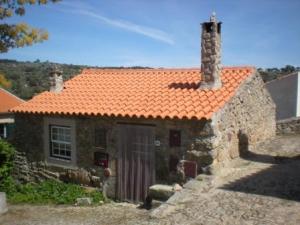










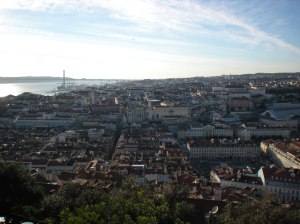








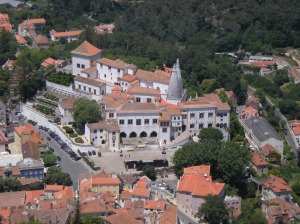







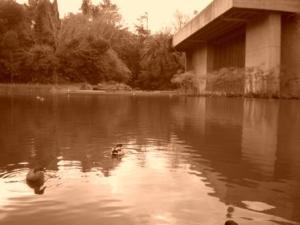












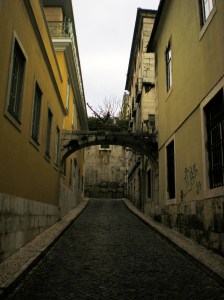



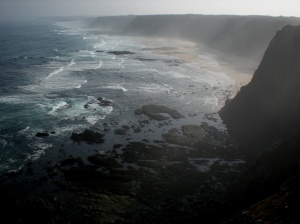


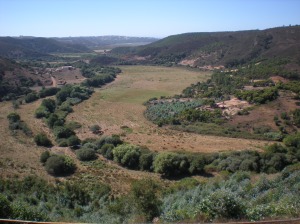























Wow!
Pingback: Saudade, the melancholia remains. November 15 2013 | nfocus4youblog
Pingback: Dark moments in Lisbon, lighter ones in Paris | My Five Romances
Pingback: Abandoned, feline and artistic Athens. | Archie´s Many Meetings
Pingback: Eu amo português! Loving language in Portugal | Loving Language